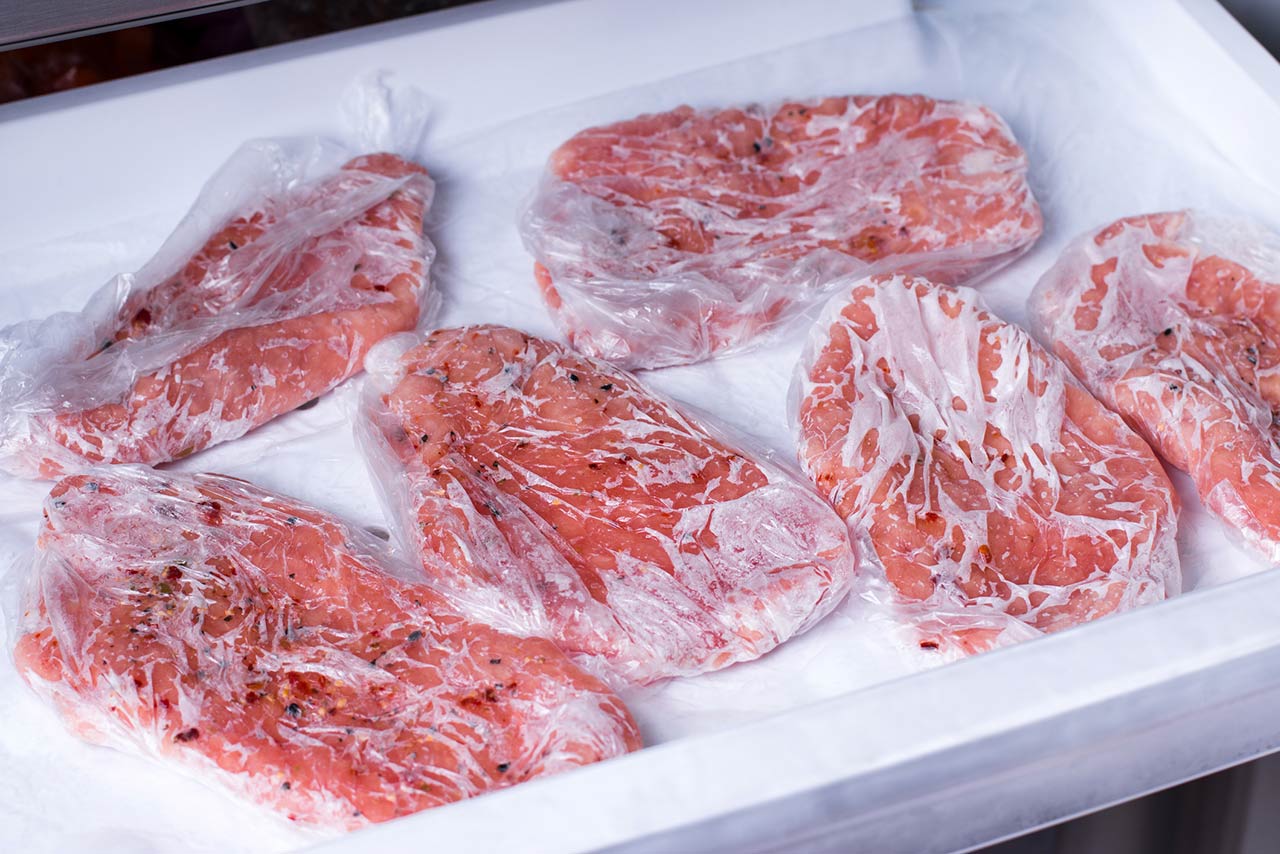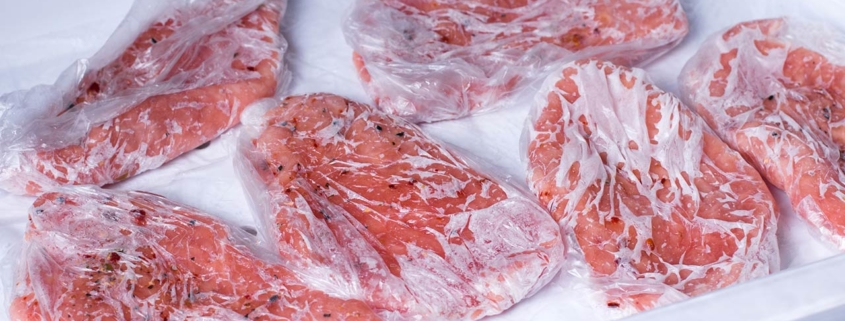Chicago Home and Lifestyles – How To Freeze Meat Safely!

So far we’ve covered how to reduce food waste and how to get the most out of various pantry items with different lifespans. Now, let’s take on best practices for freezing meat!
Keeping meat frozen is the best way to guarantee freshness for the long term. The most important aspect of freezing meat, or anything for that matter, is temperature! Freezing temperature should always be 0 degrees Fahrenheit or lower, otherwise you’re asking for germs and microorganisms.
Amazingly, if kept at 0 degrees Fahrenheit, meat will be safe to eat indefinitely. Of course, there is a big difference between safe and good.
Have you ever eaten a meal that “tastes like refrigerator”? That’s the result of meat being freezer burned! So how long should meat stay frozen before it goes bad? Here are a few guidelines for freezing meat for optimum taste:
Chicken: A whole bird can be frozen for up to a year. Chicken parts such as wings and drumsticks are best kept for 9 months or less; anything skinless should only be kept up to 6 months.
Beef: Meat like steaks and roasts can last up to 8 months, but you’ll get the best quality before 4 months. Ground meat of any kind contains more air – the enemy of longevity in meat – so the MAX life expectancy is 4 months!
Lamb or Pork: Chops, lamb and pork are also best by 4 months but, if you’re clever, can be stretched to 6! Larger cuts of pork and lamb can last up to 8 – 12 months. Processed meats like sausage, hot dogs, lunch meat, and ham should be eaten within 6 – 10 weeks to get the best flavor. Bacon in its original vacuum packaging can be frozen for 6 months.
Fish: Seafood is delicate, but surprisingly lean fish can last up to 8 months! Fatty fish like salmon, on the other hand, should be frozen no more than 2 – 3 months.
When it comes to cooked meat saved as leftovers, well wrapped beef and pork will last 2 – 3 months; poultry and fish dishes last double that!
As mentioned above, air is the enemy of longevity in frozen meat of any kind. It causes the nasty freezer burn that, while harmless, makes food disgusting! Many guidelines state that leaving the meat in its original packaging and overwrapping it with heavy duty freezer wrap such as foil, plastic wrap or freezer paper can delay freezer burn – I disagree.
In my opinion, unless vacuum sealed, packaging leaves too many air pockets for freezer burn to form! To better preserve meat, use foil or heavy-duty freezer bags. Pro-tip: do not wrap meat in foil alone! Use wax or parchment paper first. There should be no direct contact between foil and food. Be sure to wrap your food tightly, squeezing out as much air as possible.
Check out www.foodsafety.gov for more guidelines.
Kathleen Weaver-Zech and Dean’s Team Chicago

